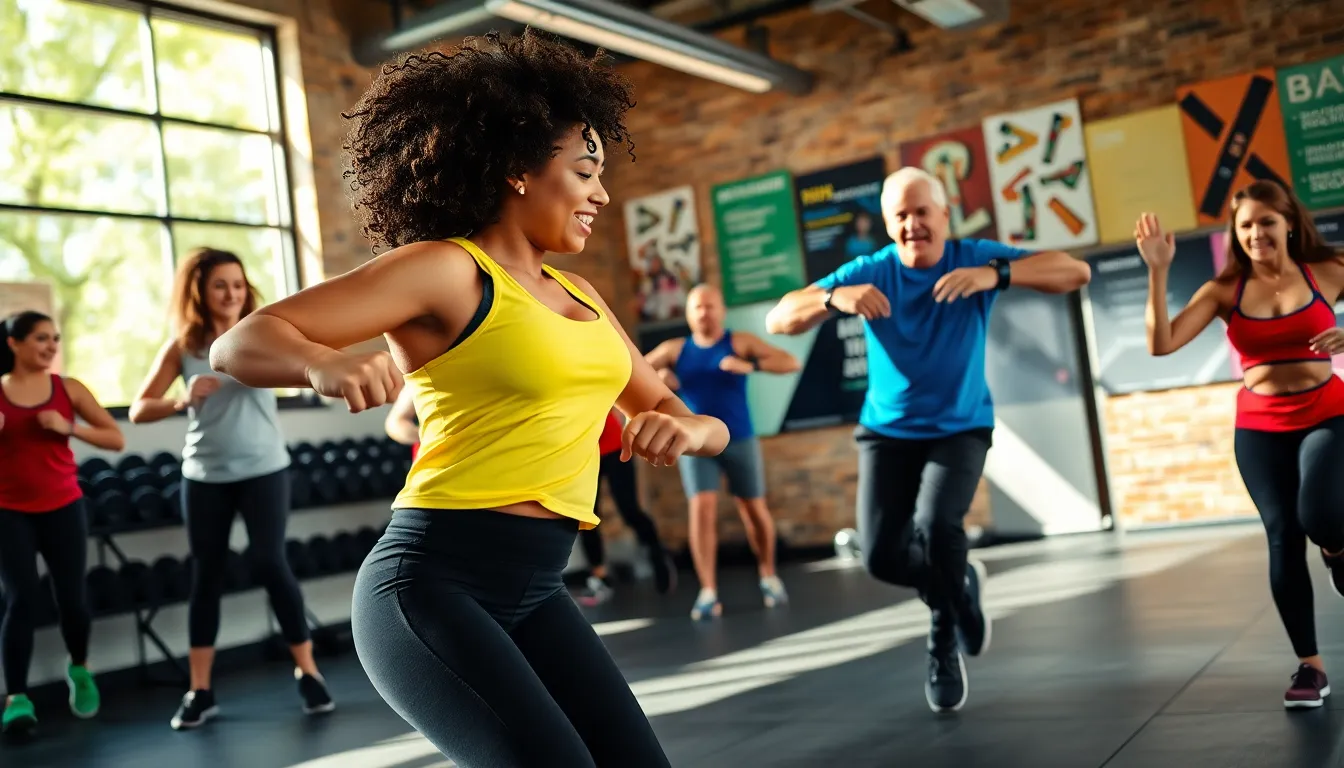In recent years, fitness training has undergone significant transformations, making it more accessible and effective for individuals of all fitness levels. From high-intensity interval training (HIIT) to personalized workout plans, the landscape of fitness continues to evolve. This comprehensive overview will investigate into the latest trends, the incorporation of technology, and the essential role of nutrition in fitness training, all while spotlighting success stories that inspire. Whether someone is just starting their fitness journey or looking to elevate their routine, understanding these elements is key to achieving wellness goals.
Table of Contents
ToggleThe Evolution of Fitness Training

Fitness training has experienced a remarkable evolution over the decades. Historically, exercise was often seen as a chore, limited to structured gym classes and extensive manual labor. But, the advent of fitness culture in the late 20th century transitioned exercise into a mainstream lifestyle choice.
Before this shift, common fitness practices revolved around traditional weightlifting and cardio routines. The 1980s introduced individuals to step aerobics and Jane Fonda workout tapes, emphasizing routines that could be easily followed at home. In the following decades, fitness programs began to branch out, leading to the rise of functional training, which focuses on movements applicable to daily life.
The introduction of group fitness classes and boutique gyms has since personalized the fitness experience. Programs now cater to individual preferences, creating a community atmosphere while providing variety and excitement to workouts. Besides, the past decade has seen a surge in awareness about mental health and the importance of mind-body connection, bringing practices like yoga and Pilates into mainstream fitness training.
Current Trends in Fitness Training
Today, there are several exciting trends in fitness training that reflect societal shifts and technological advancements. Some of the most notable include:
- High-Intensity Interval Training (HIIT): HIIT has become a favorite due to its effectiveness and time efficiency. These workouts typically involve short bursts of intense exercise followed by rest periods, making it possible to achieve substantial results in less time.
- Functional Training: This trend emphasizes training the body for activities performed in daily life, like lifting and reaching, improving overall physical performance.
- Virtual Fitness Classes: The pandemic accelerated the adoption of online fitness classes. Many platforms now offer live-streamed sessions, allowing individuals to join from the comfort of their homes.
- Wearable Technology: Fitness trackers and smartwatches have become essential tools for many. By providing real-time data on heart rate, activity level, and even sleep patterns, they help individuals monitor their progress and stay accountable.
- Mindfulness and Wellness Integration: Increasingly, fitness programs are incorporating aspects of mental well-being, such as yoga and meditation, recognizing the link between mental health and physical fitness.
Incorporating Technology into Fitness Training
In an age dominated by technology, integrating it into fitness training is almost a given. Advances in technology have greatly enhanced how individuals approach fitness. Fitness apps now provide personalized workout plans, instructional videos, and progress tracking, making it easier for individuals to maintain motivation and consistency.
Wearable devices, such as fitness trackers, smartwatches, and heart rate monitors, offer insights that were previously unavailable. Users can analyze data to refine their training approaches, measure recovery times, and make informed decisions about their fitness routines. This real-time feedback encourages a more individualized workout experience.
Also, virtual reality (VR) is also making its way into fitness training. VR workouts create immersive environments that engage users in unique ways, transforming mundane routines into vibrant virtual adventures. As this technology develops, it promises to redefine the conventional gym experience.
Importance of Nutrition in Fitness Training
While exercise is critical for fitness, proper nutrition is equally important for achieving optimal results. Nutrition fuels the body, aids recovery, and enhances performance. Understanding the key roles of different nutrients can significantly impact training outcomes:
- Macronutrients: Proteins, fats, and carbohydrates are essential for sustaining energy levels and providing the building blocks for muscle repair and growth. A balanced diet, tailored to individual training goals, can optimize performance.
- Hydration: Staying hydrated is vital for maintaining energy and preventing fatigue. Dehydration can lead to decreased performance, making fluid intake a key focus for anyone engaged in fitness training.
- Meal Timing: The timing of meals can influence energy levels during workouts and recovery afterward. Pre- and post-workout meals should be strategically planned to maximize benefits, including protein intake for muscle repair.
Building a Personalized Fitness Training Plan
Creating a personalized fitness training plan involves several steps, ensuring it aligns with individual health goals, lifestyle, and preferences. This approach is crucial for long-term success and sustainability in fitness:
- Setting Goals: The first step is identifying specific, measurable, achievable, relevant, and time-bound (SMART) goals. Whether it’s weight loss, muscle gain, or improving endurance, having clear goals helps maintain motivation.
- Assessing Fitness Level: Understanding one’s current fitness level can help tailor the training plan accordingly. This may include assessing cardiovascular fitness, flexibility, and strength.
- Choosing Activities: Selecting a variety of exercises that include cardio, strength, flexibility, and balance training keeps workouts diverse and engaging. The chosen activities should align with personal interests to enhance adherence.
- Progressive Overload: It’s essential to gradually increase the intensity of workouts over time. This could mean lifting heavier weights, increasing workout duration, or enhancing workout frequency to continuously challenge the body.
- Regular Assessment and Adjustment: Regularly evaluating the training plan against progress allows for adjustments. If certain exercises feel ineffective or if goals shift, modifications should follow suit.
Success Stories: Transformations Through Fitness Training
Success stories serve as powerful motivators, illustrating the powerful impact of fitness training on individuals’ lives. For instance, consider Jane, a busy professional who initially struggled with her weight. Through consistent HIIT workouts and a focus on nutrition, she lost 30 pounds and significantly improved her energy levels.
Then there’s Mark, who embraced strength training after being diagnosed with a chronic health condition. With guidance from a personal trainer, he not only regained his strength but also transformed his overall health and wellbeing.
These stories and countless others exemplify how personalized fitness training can lead to profound transformations. They inspire others to take action, validate the importance of dedication, and remind us that while the journey can be challenging, the rewards are undeniably worth it.
Conclusion
To conclude, fitness training is a dynamic field that continues to evolve, fueled by trends, technology, and an increasing understanding of the importance of holistic health. Whether it’s through innovative workout techniques, integration of tech tools, or the essential role of nutrition, individuals have more resources than ever to support their fitness journeys.
By embracing these elements and fostering a personalized approach, one can navigate their path toward health and well-being successfully. The power of transformation lies in knowledge, motivation, and the willingness to adapt, traits that anyone embarking on a fitness journey can cultivate.




